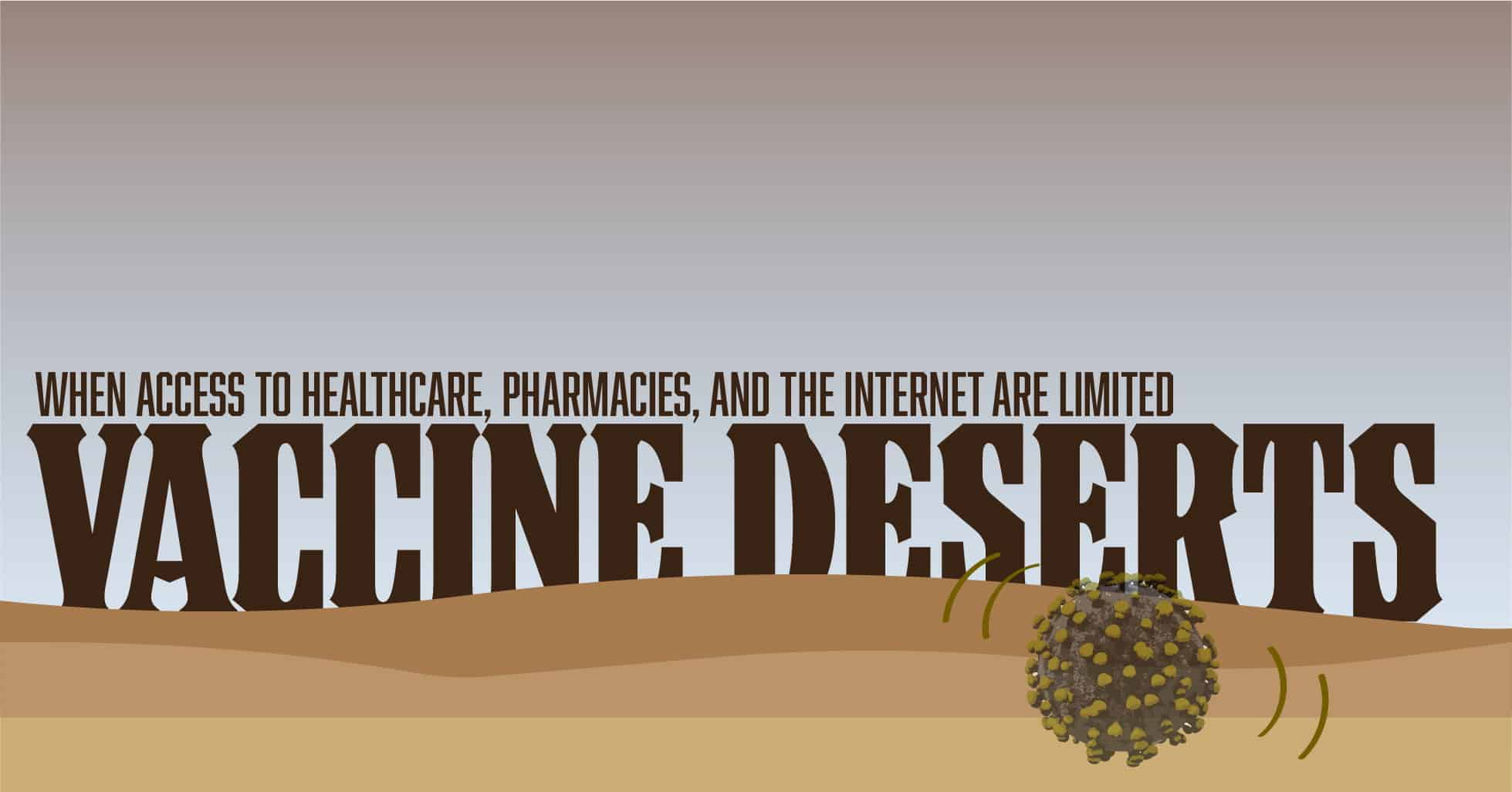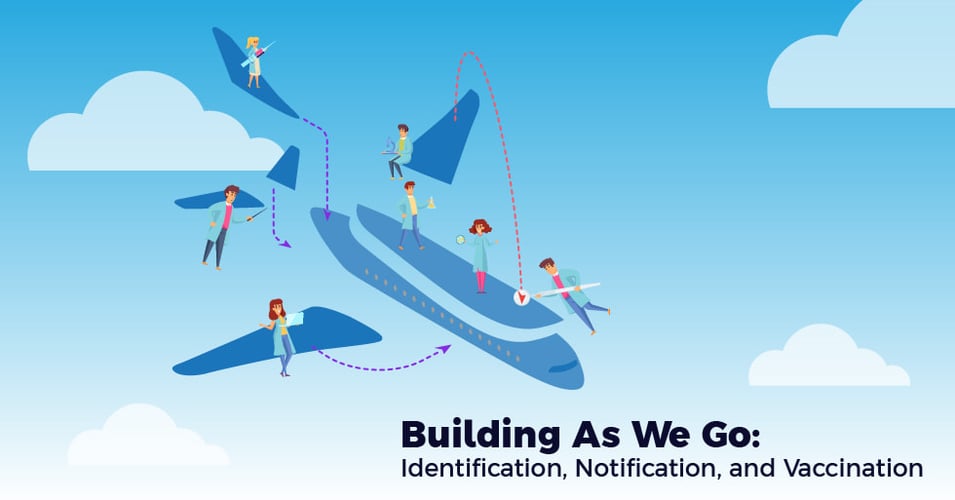Vaccine Deserts: When Access to Healthcare, Pharmacies, and the Internet are Limited

 Despite incredible progress in the manufacture and distribution of COVID-19 vaccines, there are still significant geographic areas in our country that have lagged in getting individuals vaccinated. These areas are typically rural, remote, and economically disadvantaged. These "vaccine deserts" are in fact an intersection of other significant accessibility issues, many of which have existed for decades. Where do you see vaccine deserts? The same places where you have healthcare deserts, pharmacy deserts, and internet deserts.
Despite incredible progress in the manufacture and distribution of COVID-19 vaccines, there are still significant geographic areas in our country that have lagged in getting individuals vaccinated. These areas are typically rural, remote, and economically disadvantaged. These "vaccine deserts" are in fact an intersection of other significant accessibility issues, many of which have existed for decades. Where do you see vaccine deserts? The same places where you have healthcare deserts, pharmacy deserts, and internet deserts.
To roll out our national effort to get individuals vaccinated, you need places to store the vaccine, effective ways to alert the public and let them sign up for appointments, and places to hold vaccine clinics to meet the needs of the surrounding community. However, access to storage, communication, and distribution facilities are not as easy to come by in parts of our nation.
1. Healthcare Deserts
There are communities in our nation where residents have to travel quite far to reach a hospital or other healthcare facility. Some of these areas are remote by design - there are communities that simply exist far from city centers. Individuals who live in remote, rural communities but don't have access to transportation face a tremendous hurdle in accessing basic healthcare. In some areas, communities may not live that far apart, but still have not been able to attract or retain a medical facility. These Medically Underserved Areas have "too few primary care providers, high infant mortality, high poverty or a high elderly population," making them at risk for serious cases of COVID-19, while at the same time making access to healthcare already difficult. Mobile vaccination sites, pop-up vaccination clinics and other creative deployment methods are needed to serve these areas.
2. Pharmacy Deserts
Alongside healthcare deserts are areas that have few or no pharmacies. Because pharmacies have been a significant location for vaccine distribution, this means that areas without pharmacies do not have the benefits of a major chain involved in vaccine distribution nearby. Often, pharmacy deserts correspond to low socio-economic areas; the communities do not have the economic market power to attract a chain pharmacy location. For someone living in these areas, simply making an appointment online at one of several pharmacy chains is not an option - that is, if they even have internet access.
3. Internet Deserts
How did you set up your vaccine appointment? Chances are, it involved registering online with your local health department, getting periodic emails and texts from them, looking online for available appointments and then scheduling a time and place that works for you. Now what about those people without internet access? Believe it or not, there are parts of our nation with no internet access. Rural communities are 20x more likely to not have any home internet services, due in part to the remote nature of rural communities (where the required telecommunications network hardware has not reached) and the lack of infrastructure investment in these areas due to lower population density. The result is a significant number of communities who must schedule vaccines by phone, which can be an overwhelming commitment of time and patience that may not even be possible during working hours. And even in wired communities, there are significant numbers of elderly residents who do not have the access or comfort level needed for online scheduling, and many who don't have a family member to help them navigate the often complicated process. These internet deserts can mean many forgotten communities.
Consider these deserts of opportunity and access: These geographic areas often overlap with regions that have experienced systemic health and social inequalities for decades. These areas tend to have higher rates of smoking, more cases of high blood pressure and obesity, as well as more widespread distrust of the medical community. All of these issues together make distributing the COVID-19 vaccine all the more difficult, at the same time as they all make the community more vulnerable to the virus itself. In order to address these disparities in vaccine access, we need to keep in mind all the issues at hand.





